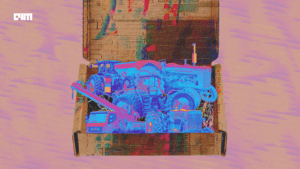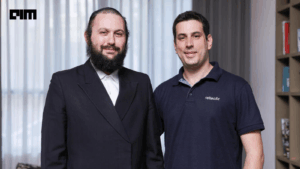Ask a random kid what ChatGPT is, and you’ll likely hear the same thing: it’s the AI they use to finish homework. Ask them what AI they use when they’re not doing homework, and the answer is silence. “That’s the gap,” Dean Leitersdorf, co-founder and CEO of Decart, said in an interview with Forbes. “What AI do you use when you’re not working? That’s the question we’re trying to answer.”
Leitersdorf, whose company just raised $100 million at a $3.1 billion valuation, believes the next breakthrough in AI won’t come from knowledge or productivity tools, but from fun. He argues that consumer tech today is stuck in a loop of passive feeds and anxiety-amplifying scrolls.
“Being on our phones used to be very fun,” he told Forbes. “Over the past few years, it feels like doomscrolling has taken over. We have an opportunity to create a completely different experience with AI that actually allows us to relax, to channel our inner creativity, and to have a good time.”
Decart, founded in 2023, sits squarely inside the generative-AI arms race, but not in the usual utility category. Its flagship: Mirage and MirageLSD, video models capable of transforming live video in near-real time. Broom-as-lightsaber or living room-as-Minecraft castle, can happen almost instantly. “The magic is not waiting for a render,” Leitersdorf said. “You describe it, and it happens in 40 ms.” Unlike static or queued video generation, Decart says it offers responsive, playful augmentation, something that, theoretically, could be habitual.
“People crave creativity, not just clever tools,” Leitersdorf commented in Wired, after sharing demos as “mind-bending,” able to produce coherent frames at usable speed. He believes this distinction gives them a shot at re-anchoring phones away from doomscrolling and back into wonder. Critics point out that Snapchat filters provided that cheap thrill, until virality fizzled. So the question becomes: can Decart stick?
Leitersdorf sees the answer lying in combining consumer and commercial pathways. “We’re building consumer apps atop our model, and licensing to enterprises: hotels, hospitals, studios, for creative use cases,” he said to Fortune. Instances range from immersive lobbies to surgery distractions for kids. It’s an incentive model: entertainment sells attention, while licensing funds expansion, and both support keeping “play” alive.
Video models aren’t unique in themselves. For instance, Runway has raised over $140 million to power creative tools for filmmakers, leveraging multimodal AI to generate and edit video content in intuitive ways. Similarly, Synthesia, a London-based startup, enables AI-generated video avatars, used in enterprise presentations and internal comms, approaching a billion-dollar valuation. But, Leitersdorf claims Mirage is still the only real-time video model available to the public. “The other big tech doesn’t have this yet,” he said in the same interview, “except for Google.”
OpenAI’s Sora and Google DeepMind’s Veo are pursuing dynamic video, albeit often with a focus on story arcs or audio-sync sophistication. Veo emphasizes quality and synchronized audio; Sora leans into seamless integrations. Leitersdorf acknowledges the field is capital-intensive and that rivals could match them. “The big labs may build this too,” he admits. Investors clearly got the idea; The company went from stealth to $3.1B evaluation within a year of coming out of stealth. They are betting that imagination can fuel growth in AI’s next chapter.
But building for play raises regulatory and ethical baggage: deepfakes and manipulated livestreams to name a few. Real-time video editing invites misuse (deepfakes, manipulated livestreams) in ways text or static images don’t. WPP CEO Mark Read warned that “we all need to be vigilant to the techniques that go beyond emails to take advantage of virtual meetings, AI and deepfakes,” after a voice-clone scam attempted to impersonate company leadership in a Teams call.
Leitersdorf says Decart avoids audio transformations altogether, calling them “very dangerous,” and underlines the importance of designing with clear user expectations, so users understand what’s imaginative, not real. That’s a loose governance posture in an environment where Google, OpenAI and others are already experimenting with guardrails and labeling.
The bigger battle, he suggests, is consumer adoption at scale. People install ChatGPT for productivity, but what if the next app after that is Decart? “It can’t be that ChatGPT is the last thing a billion people install on their phones,” Leitersdorf told Fortune. His bet relies on changing consumer behaviour patterns: leisure, once defined by doomscrolling, evolving into creative participation.
Leitersdorf doesn’t pretend the shift will be easy. Platforms are sticky, habits are entrenched, and novelty burns out fast. But he insists the opportunity is still wide open. “If we manage to touch hundreds of millions, a billion people with the tech that we create, whether it’s directly or whether it’s indirectly by selling it to partners, then that would have been what we set out to do. And that would make me very happy to see the world having a bit more fun in this entire new very stressful era that we’re living in.”










